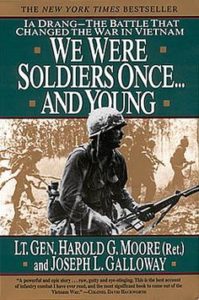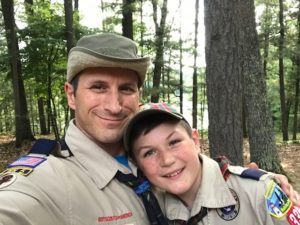It was some months ago that I read a post on LinkedIn by a young woman company founder extolling her women-led workplace. Now, I have absolutely nothing against a women-led workplace – I’ve known a great many women who did or could lead a whale of a workplace.
But this particular leader, as part of cheering her all-women leadership team, felt compelled to point out (more than once) that they were inventing all their own new rules and practices, since obviously any that had a tie back to “old white men” were automatically wrong or evil. (She was cheered heartily by most of her article’s commenters.)
As I’ve written elsewhere, I struggle to understand why certain people feel that, to build women up, you must tear men down. How can they be blind to the poisonous fruit that action harvests?
And how can it be in any way acceptable, in 2018, to be blatantly racist, ageist and sexist – all in a single phrase – in business communication? Or hell, in ANY communication? And then be cheered for it??
But the young lady’s article got me thinking about certain old white men who were among those she universally disparaged. I’ve written about one in particular before, but I thought I’d share his story once more as a counterpoint to that woman leader’s naked contempt.

Colonel Rick Rescorla is the man whose photo graces the cover of General Harold Moore’s book We Were Soldiers Once… and Young. He was a platoon leader during the Ia Drang battle in Vietnam that’s chronicled in the book. He was one of Major Myron Diduryk’s men in the 2nd Battalion of the 7th Cavalry. Rescorla would survive both that battle and that war. (Diduryk, on the other had, never had the chance to become an old white man. He took a fatal machine-gun burst to the stomach in the doorway of his Huey helicopter on my 5th birthday.)
Rick Rescorla was born in Cornwall, England. He first served as a paratrooper in the British army, moving on to a stint as an intelligence office in Cyprus and a commando in Rhodesia (now Zimbabwe). Then he became a mercenary for the US Army, which led him to that famous battle documented by General Moore. He got his US citizenship after the war.
It was many years later that he was an “old white man” leader. He’d built a civilian career in safety and security, eventually becoming the Vice President for Corporate Security for Morgan Stanley Dean Witter & Co. in New York City. There he was routinely ridiculed and laughed at for the evacuation drills he insisted the company conduct in its corporate offices.
Nobody is laughing now.
Most of his charges survived the war he didn’t, the one that began in earnest at Ground Zero, the World Trade Center, on Sept. 11, 2001. Morgan Stanley lost just six of their 3,700 WTC employees in that attack. Rick Rescorla, age 62, was one of them. He’d spent hours directing the evacuation of employees, despite orders from the New York Port Authority for people to stay put. He died when he went back for a final check of the company’s floors and Tower #2 came crashing down with him inside. The survivors owe him their lives.
He left behind a wife of just 2-1/2 years, Susan. They got to speak just briefly as the situation developed:
Susan Rescorla watched the United Airlines jet carve through her husband’s tower, and she dissolved in tears. After a while, her phone rang. It was Rick.
“I don’t want you to cry,” he said. “I have to evacuate my people now.”
She kept sobbing.
“If something happens to me, I want you to know that you made my life.”
The phone went dead.
Rick Rescorla was hailed by those who knew him, from one end of life to the other, as one of the bravest men they’d ever met. It was that courage coupled with a deep caring for those in his charge that made him the unparalleled leader he was, despite being an old white man.
I’ll leave you by addressing a slightly modified version of one of my favorite passages from Charles Dickens’s A Christmas Carol to the woman leader who felt so comfortable dismissing a whole category of people because of their age, race, and sex:
So perhaps, in the future, you will hold your tongue until you have discovered where the [old white men are], and WHO [they are]. It may well be that, in the sight of Heaven, you are more worthless and less fit to [lead] than MILLIONS like this [old white man].
PS – My sources for the above information are here and in We Were Soldiers Once… and Young. Please do read both. I’ve really only scratched the surface in this article.


